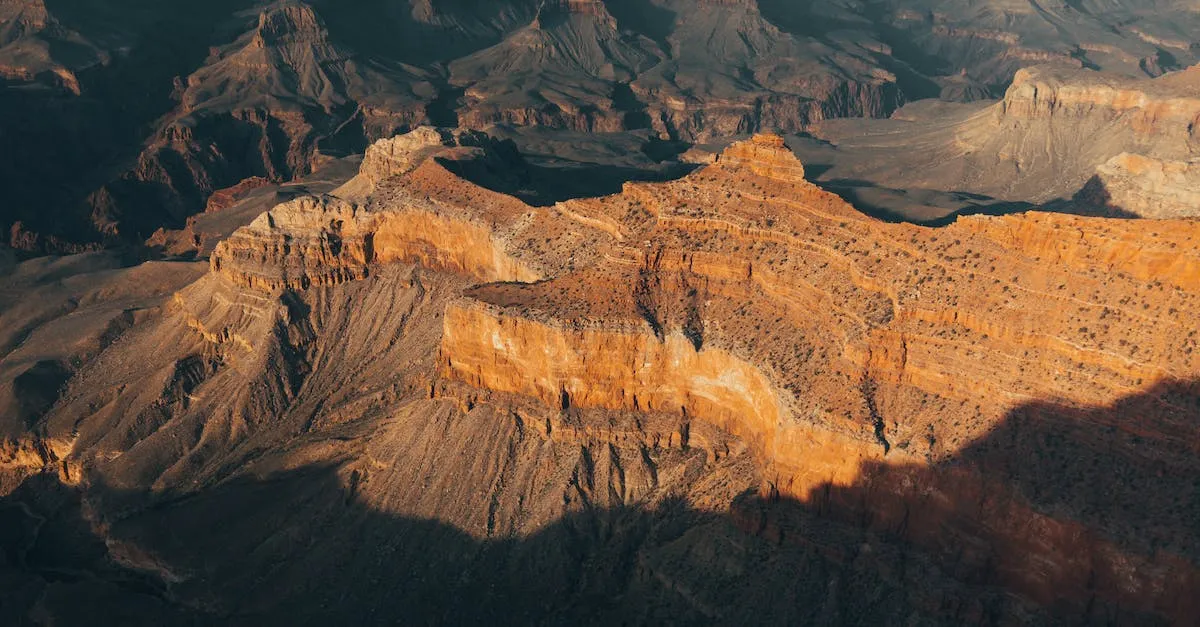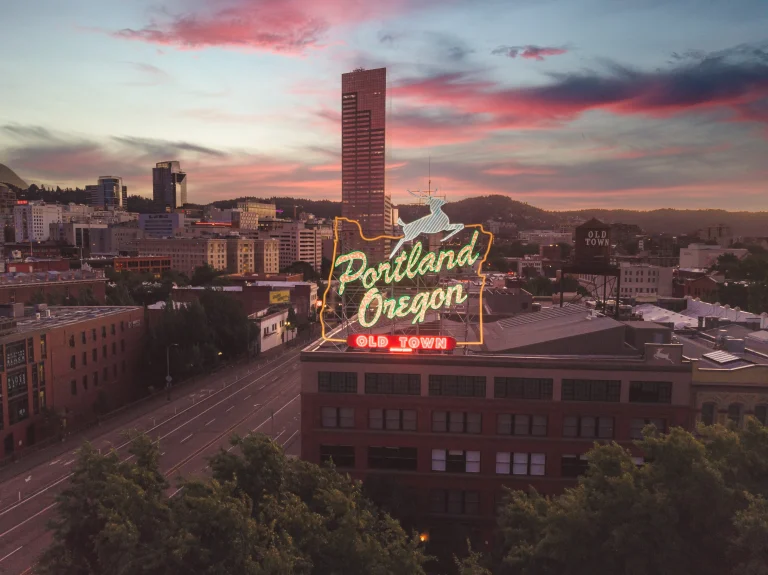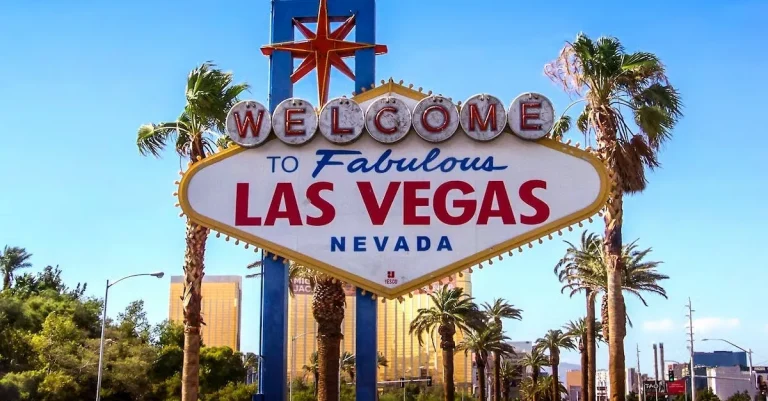Colorado Vs Washington: How The Two States Stack Up
With their stunning mountain vistas, crisp air and reputation for outdoor living, Colorado and Washington seem cut from the same cloth. But looks can be deceiving – there are some key differences that set these Western states apart.
If you’re short on time, here’s a quick answer: Colorado boasts a lower cost of living and taxes, plus stronger job growth. But Washington edges out Colorado in education and healthcare access. Both states share an entrepreneurial spirit and love of skiing and microbrews!
This in-depth comparison examines essential factors like jobs, housing, education, climate, and lifestyle. Whether you’re considering a move out West or just curious how these states measure up, read on to see how Colorado and Washington compare.
Economy and Jobs
When comparing the economies of Colorado and Washington, it is important to take into account the job growth in both states. Both Colorado and Washington have seen significant increases in employment opportunities in recent years.
Job Growth
According to the Bureau of Labor Statistics, Colorado experienced a job growth rate of 2.5% in 2019, adding over 70,000 jobs to its economy. This growth can be attributed to a variety of factors, including a thriving tech industry, a strong tourism sector, and a favorable business climate.
Washington, on the other hand, saw a job growth rate of 2.1% in the same year, adding over 60,000 jobs. The state’s robust aerospace industry, as well as its booming software development and e-commerce sectors, have contributed to this growth.
Unemployment Rates
When it comes to unemployment rates, both Colorado and Washington have fared well. As of July 2020, Colorado’s unemployment rate stood at 7.4%, while Washington’s was slightly higher at 8.5%. While these numbers may seem high, it is important to note that the COVID-19 pandemic has had a significant impact on unemployment rates across the country.
Both states have implemented measures to support businesses and workers during these challenging times.
Fortune 500 Companies
Another aspect to consider when comparing the economies of Colorado and Washington is the presence of Fortune 500 companies. Colorado is home to several major corporations, including Arrow Electronics, Ball Corporation, and DaVita Inc.
These companies contribute to the state’s economy by providing jobs and driving innovation. Washington, on the other hand, boasts the presence of giants like Amazon, Microsoft, and Starbucks, which have had a significant impact on the state’s economy and job market.
Housing and Cost of Living
When comparing Colorado and Washington, one of the key factors to consider is the housing and cost of living in each state. Both states have seen significant growth in recent years, leading to an increase in housing prices and overall cost of living.
However, there are some notable differences between the two.
Home Prices
In terms of home prices, both Colorado and Washington have experienced a rise in housing costs. According to recent data from the National Association of Realtors, the median home price in Colorado is $400,000, while in Washington it is $450,000.
These prices are reflective of the strong demand for housing in both states, as well as the limited supply of available homes.
It’s important to note that home prices can vary significantly depending on the location within each state. For example, in popular cities like Denver or Seattle, the median home price may be much higher than the state average.
On the other hand, smaller towns or rural areas may have more affordable housing options.
Rent Prices
When it comes to renting a home or apartment, both Colorado and Washington have seen increases in rent prices. According to data from RentCafe, the average monthly rent in Colorado is $1,500, while in Washington it is slightly higher at $1,600.
These figures may vary depending on the specific city or neighborhood.
Renting a home or apartment can be a more flexible option for individuals who are not ready to commit to buying a property. However, it’s important to consider the rising rental costs and the potential impact on your budget.
Overall Cost of Living
When comparing the overall cost of living in Colorado and Washington, it’s important to take into account factors such as groceries, transportation, healthcare, and taxes. Both states have relatively high costs in these areas, but the exact figures may vary depending on individual circumstances.
According to the Missouri Economic Research and Information Center, the cost of living index for Colorado is 112.1, while for Washington it is slightly lower at 110.0. These figures indicate that both states have a cost of living higher than the national average, with Colorado being slightly higher than Washington.
It’s worth noting that cost of living can also vary within each state. For example, living in a major city like Denver or Seattle may come with a higher price tag compared to smaller towns or rural areas.
When considering housing and cost of living, it’s important to take into account your personal financial situation and priorities. Both Colorado and Washington offer unique opportunities and lifestyles, so it’s crucial to research and evaluate the specific factors that are most important to you.
Education
K-12 School Systems
Both Colorado and Washington place a strong emphasis on providing quality education to their K-12 students. In Colorado, the K-12 school system is organized into 178 school districts, serving over 900,000 students.
The state has implemented various initiatives to improve educational outcomes, such as the Colorado Achievement Plan for Kids (CAP4K) which sets high academic standards and provides support for struggling schools.
Similarly, Washington has a well-developed K-12 school system, with 295 school districts serving approximately 1.1 million students. The state has implemented the Washington State Learning Standards, which outline the knowledge and skills that students should acquire at each grade level.
Additionally, Washington has made a commitment to reducing class sizes and increasing access to early learning programs.
For more information on the K-12 school systems in Colorado and Washington, you can visit the respective state education department websites: Colorado Department of Education and Washington Office of Superintendent of Public Instruction.
Higher Education
When it comes to higher education, both Colorado and Washington offer a wide range of opportunities for students. Colorado is home to numerous renowned universities and colleges, including the University of Colorado Boulder, Colorado State University, and the University of Denver.
The state also has a strong community college system, providing affordable options for students seeking associate degrees or vocational training.
Similarly, Washington boasts prestigious institutions such as the University of Washington, Washington State University, and Gonzaga University. The state is also known for its strong focus on technical and vocational education, with programs offered at community and technical colleges throughout the state.
For students interested in pursuing higher education in Colorado, they can visit the website of the Colorado Department of Higher Education. Similarly, those considering Washington as their educational destination can find more information on the Washington Student Achievement Council website.
Educational Attainment
Both Colorado and Washington have made significant strides in improving educational attainment rates among their residents. In Colorado, over 40% of adults aged 25 and older hold a bachelor’s degree or higher, surpassing the national average.
The state has also seen an increase in high school graduation rates in recent years.
Washington is also above the national average in terms of educational attainment, with over 37% of adults holding a bachelor’s degree or higher. The state has implemented initiatives to increase college enrollment and completion rates, with a particular focus on supporting underrepresented groups.
For more information on educational attainment and other education-related statistics, you can refer to the websites of the U.S. Census Bureau and the National Center for Education Statistics.
Healthcare and Public Health
When it comes to healthcare and public health, both Colorado and Washington have made significant strides in providing quality care and ensuring the well-being of their residents. Let’s take a closer look at how these two states stack up in terms of health insurance coverage, healthcare quality, and public health metrics.
Health Insurance Coverage
Colorado and Washington have both made efforts to increase health insurance coverage for their residents. In Colorado, the state has implemented Medicaid expansion under the Affordable Care Act, resulting in a decrease in the uninsured rate.
According to the Colorado Health Access Survey, the uninsured rate in the state dropped from 14.3% in 2013 to 6.5% in 2019.
Similarly, Washington has also seen improvements in health insurance coverage. The state has its own health insurance exchange, Washington Healthplanfinder, which has helped increase access to affordable health insurance for individuals and families.
According to the Washington State Office of the Insurance Commissioner, the uninsured rate in Washington decreased from 14.5% in 2013 to 5.5% in 2019.
Healthcare Quality
Both Colorado and Washington have been recognized for their high-quality healthcare systems. In a study conducted by the Commonwealth Fund, Colorado ranked 7th and Washington ranked 11th in overall healthcare performance among all 50 states.
The study assessed various factors including access to care, prevention and treatment, avoidable hospital use and costs, and healthy lives.
Additionally, both states have a strong focus on patient safety. Colorado’s Department of Public Health and Environment has implemented initiatives to reduce healthcare-associated infections and improve patient safety in hospitals.
Washington’s Department of Health has also implemented programs to enhance patient safety and prevent medical errors.
Public Health Metrics
When it comes to public health metrics, both Colorado and Washington have made significant progress. In terms of obesity rates, Colorado has consistently ranked among the lowest in the nation. According to the Centers for Disease Control and Prevention (CDC), Colorado had the lowest adult obesity rate in the country in 2019, at 23.8%.
Washington has also made strides in public health. The state has implemented policies to reduce smoking rates, resulting in a decline in adult smoking rates over the years. According to the Washington State Department of Health, the adult smoking rate in the state decreased from 19.1% in 2011 to 13.8% in 2019.
Outdoor Recreation and Lifestyle
Skiing and Snowboarding
Both Colorado and Washington offer incredible opportunities for skiing and snowboarding enthusiasts. Colorado is known for its world-class ski resorts such as Aspen, Vail, and Breckenridge. With its high altitude and abundant snowfall, Colorado provides some of the best skiing and snowboarding conditions in the country.
Washington, on the other hand, is home to resorts like Crystal Mountain and Mount Baker, which offer breathtaking views of the Cascade Mountains. While Colorado may have a greater variety of ski resorts, Washington’s resorts are known for their challenging terrain and pristine backcountry skiing options.
Hiking and Camping
When it comes to hiking and camping, both Colorado and Washington boast an abundance of natural beauty. Colorado is famous for its majestic Rocky Mountains, offering countless trails for hikers of all skill levels.
From the iconic Maroon Bells in Aspen to the rugged trails in Rocky Mountain National Park, Colorado’s hiking options are truly awe-inspiring. Washington, on the other hand, is home to the stunning Olympic National Park, which features diverse ecosystems ranging from glacier-capped mountains to old-growth forests.
The Pacific Northwest’s mild climate makes it an ideal destination for year-round outdoor activities.
Breweries and Legal Marijuana
When it comes to breweries and legal marijuana, both Colorado and Washington lead the way. Colorado has long been known for its craft beer scene, with the city of Denver alone boasting over 100 breweries.
From small, independent breweries to larger, well-established ones, Colorado offers a wide range of options for beer enthusiasts. Additionally, Colorado was one of the first states to legalize recreational marijuana, creating a thriving cannabis industry.
Washington also has a thriving craft beer scene, with cities like Seattle and Spokane offering a plethora of breweries to explore. The state also legalized recreational marijuana around the same time as Colorado, allowing for a booming cannabis market.
Whether you’re a beer connoisseur or a marijuana enthusiast, both Colorado and Washington offer unique experiences.
| Colorado | Washington | |
|---|---|---|
| Ski Resorts | World-class resorts like Aspen, Vail, and Breckenridge | Resorts like Crystal Mountain and Mount Baker |
| Hiking Trails | Majestic Rocky Mountains, including Maroon Bells and Rocky Mountain National Park | Olympic National Park with diverse ecosystems |
| Breweries | Over 100 breweries in Denver alone | Thriving craft beer scene in cities like Seattle and Spokane |
| Legal Marijuana | One of the first states to legalize recreational marijuana | Legalized recreational marijuana around the same time as Colorado |
Whether you prefer the towering peaks of Colorado or the lush landscapes of Washington, both states offer a wealth of outdoor recreation opportunities and a unique lifestyle. Whether you’re hitting the slopes, exploring the hiking trails, or enjoying a locally brewed beer or legal marijuana, you’re sure to find something to suit your tastes in either Colorado or Washington.
Taxes and Government
When comparing Colorado and Washington, one important aspect to consider is the taxes and government policies in each state. Let’s take a closer look at the income tax rates, sales tax rates, and the political leanings of these two states.
Income Tax Rates
Colorado and Washington have different approaches when it comes to income tax rates. In Colorado, the state income tax rate is a flat 4.63% for all income levels. This means that regardless of how much you earn, you will pay the same percentage in income taxes.
On the other hand, Washington does not have a state income tax. This means that residents of Washington do not have to pay any state income tax on their earnings.
Sales Tax Rates
When it comes to sales tax rates, both Colorado and Washington have varying rates depending on the location within the state. In Colorado, the state sales tax rate is 2.9%, but local jurisdictions can add their own additional sales tax.
This means that the total sales tax rate can range from 2.9% to 11.2%, depending on where you are in the state. In Washington, the state sales tax rate is 6.5%, and local jurisdictions can also add their own additional sales tax.
This can result in a total sales tax rate that ranges from 6.5% to 10.4% in different areas of the state.
Political Leanings
Another factor to consider when comparing Colorado and Washington is their political leanings. Colorado is known for being a swing state, with a mix of conservative and liberal voters. It has a history of electing both Republican and Democratic governors and has a fairly balanced representation in the state legislature.
On the other hand, Washington is considered to be a more liberal state, with a majority of Democratic voters. It has consistently elected Democratic governors and has a Democratic majority in the state legislature.
It is important to note that these are just generalizations and individual views can vary. For more detailed information on taxes and government policies in Colorado and Washington, you can visit the official websites of the respective state governments:
Climate and Geography
When comparing the climates and geographies of Colorado and Washington, several key factors come into play. These include average temperatures, precipitation levels, and the presence of mountain ranges.
Average Temperatures
Both Colorado and Washington experience distinct seasonal variations in temperature. However, there are notable differences between the two states. Colorado, known for its high elevation, has a more diverse climate with hotter summers and colder winters.
In Denver, for example, average summer temperatures can reach the mid-80s (Fahrenheit) while winter temperatures often drop below freezing. On the other hand, Washington has a more moderate climate, with coastal regions experiencing mild summers and winters, while areas further inland, such as Spokane, can have hotter summers and colder winters compared to the coastal regions.
Precipitation
In terms of precipitation, Washington is known for its abundant rainfall throughout the year. The state’s coastal areas, such as Seattle, receive an average of 38 inches of rain annually. In contrast, Colorado experiences a drier climate, particularly in the eastern plains.
Denver, for instance, receives an average of 15 inches of precipitation per year, with most of it falling as snow during the winter months. These differences in precipitation contribute to the distinct landscapes and ecosystems found in each state.
Mountain Ranges
Both Colorado and Washington are home to stunning mountain ranges that attract adventurers and outdoor enthusiasts. Colorado is famous for the Rocky Mountains, which dominate the state’s western region.
With towering peaks, such as Pikes Peak and Longs Peak, Colorado offers incredible opportunities for hiking, skiing, and mountaineering. Washington, on the other hand, boasts the Cascade Range, which stretches from British Columbia down to Oregon.
This mountain range includes notable peaks like Mount Rainier and Mount Baker, offering breathtaking views and a wide range of recreational activities.
For more information on Colorado’s climate and geography, visit the official website of the Colorado Climate Center: https://climate.colostate.edu/For more information on Washington’s climate and geography, visit the official website of the Washington State Department of Ecology: https://ecology.wa.gov/
Conclusion
While Washington and Colorado share mountain vistas and outdoor appeal, important differences emerge when comparing critical factors like the cost of living, job market, education system and tax rates. Colorado excels across more financial metrics, while Washington leads in public services and healthcare access.
There’s no definitive winner in Colorado vs. Washington – it depends on your personal priorities. But by weighing how these two picturesque Western states stack up, you can make an informed decision on where to put down roots.








